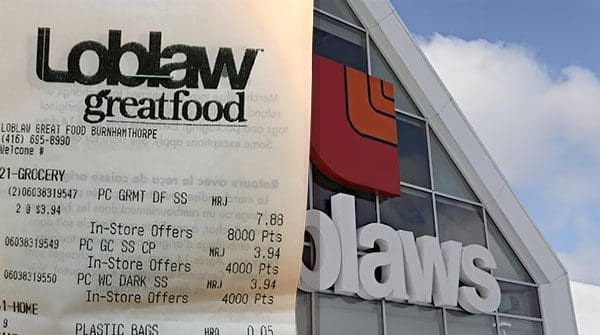Randomly inspecting grocery receipts as customers exit stores is not conducive to building trust
 Many households are currently grappling with the rising cost of living. According to a recent report by Community Food Centres Canada, the poverty rate among working-age single adults in Canada is three times higher than the national average.
Many households are currently grappling with the rising cost of living. According to a recent report by Community Food Centres Canada, the poverty rate among working-age single adults in Canada is three times higher than the national average.
Alarmingly, nearly a quarter of working single adults live below the poverty line. This concerning statistic indicates that a significant portion of the population faces financial hardship. Many Canadians are personally experiencing or know someone struggling compared to just a year ago.
The increasing expenses of shelter and food, which are fundamental necessities of life, are placing a significant financial burden on many Canadians. Approximately 45 percent of mortgage holders have variable rates, directly impacted by the Bank of Canada’s efforts to combat inflation.
 |
| Related Stories |
| Canadians are buying less food. Now what?
|
| Rents are out of control, but let’s not blame ‘the market’ for our woes
|
| How the feds are ripping off Canadian taxpayers
|
For instance, if an individual has a $300,000 mortgage spread over 25 years, they currently pay over $7,000 annually just to maintain their home. As more Canadians renew their mortgages, the number of individuals experiencing increased mortgage payments will inevitably rise.
Furthermore, rents across the country are also on the rise, further exacerbating the financial strain on individuals. These escalating costs create a substantial financial burden. In terms of grocery expenses, purchasing the same quantity of food as compared to the previous year would require an average of over $1,100 more. Consequently, individuals would need to allocate over $8,000 to maintain the same quality of life.
Given the difficulty in reducing shelter expenses unless through relocation or shared accommodations, many Canadians are forced to cut back on their food expenditures. Despite inflation, most Canadians are spending less on food. This shift is so significant that many are quick to blame food companies.
There is a growing sentiment that food should be free or food prices should be regulated, which is understandable. As faith in the capitalistic nature of our food economy diminishes, some individuals even propose imposing windfall taxes to discourage companies from excessive profits. However, while these ideas may be intriguing, they will likely lead to even worse scenarios for Canadians.
Some Canadians, academics, and political leaders have lost sight of the primary purpose of food companies. These companies must generate profits in order to fulfill their mission and continue operating. Profit generation is essential. The debate surrounding how much profit food companies should be permitted to generate has been intensely discussed in recent months. Striking the delicate balance between profit-making and maintaining a food-secure market is unique to the food sector and sets it apart from other industries.
Food companies are established to leverage the advantages that size and expertise bring, primarily to enhance efficiency on a large scale. Not everyone can hunt, fish, cook, process, and so on. While it may be theoretically possible for everyone to engage in these activities, efficiency is not guaranteed.
The concept of the experience curve aptly demonstrates that as a food company expands, it accumulates greater experience and achieves improved performance, particularly in terms of cost-effectiveness. This surpasses what individuals or small communities can achieve.
Large-scale farmers, for example, excel in their craft due to the experience curve. Companies also exhibit remarkable adaptability, enabling them to navigate sudden market shifts caused by climate change, labour disputes, or other socio-technological disruptions. By relying on food companies with an innovative mindset, food systems can enhance their resilience, a perspective that many Canadians have overlooked.
However, numerous market failures have been observed over the years, encompassing various issues such as the manipulation of bread prices, the imposition of “black-out” periods, the exploitation of low-paid employees, the timing of corporate bonuses, the exercise of supply chain bullying by certain grocers, and the remarkable volatility of food prices.
While making food free or implementing a windfall tax may seem tempting, it is unlikely to effectively address any of these problems. Instead, a more robust and authoritative Competition Bureau, in conjunction with establishing a Grocer Code of Conduct, holds greater potential for success in enhancing accountability within the food industry. While challenges will inevitably persist, the elimination of abusive practices within the supply chain and toward consumers is certain to contribute to their mitigation.
And abuse can be quite real for consumers. For instance, Loblaws recently implemented receipt verification in numerous stores across the country without providing a rationale for this decision. In contrast, Costco has been practicing receipt verification for several years as a means of validating memberships.
However, it is worth noting that Costco’s approach differs, as they verify receipts for all customers. Randomly inspecting grocery receipts as customers exit stores is not conducive to fostering a social contract that can build trust between Canadians and the food industry.
Dr. Sylvain Charlebois is senior director of the agri-food analytics lab and a professor in food distribution and policy at Dalhousie University.
For interview requests, click here.
The opinions expressed by our columnists and contributors are theirs alone and do not inherently or expressly reflect the views of our publication.
© Troy Media
Troy Media is an editorial content provider to media outlets and its own hosted community news outlets across Canada.

